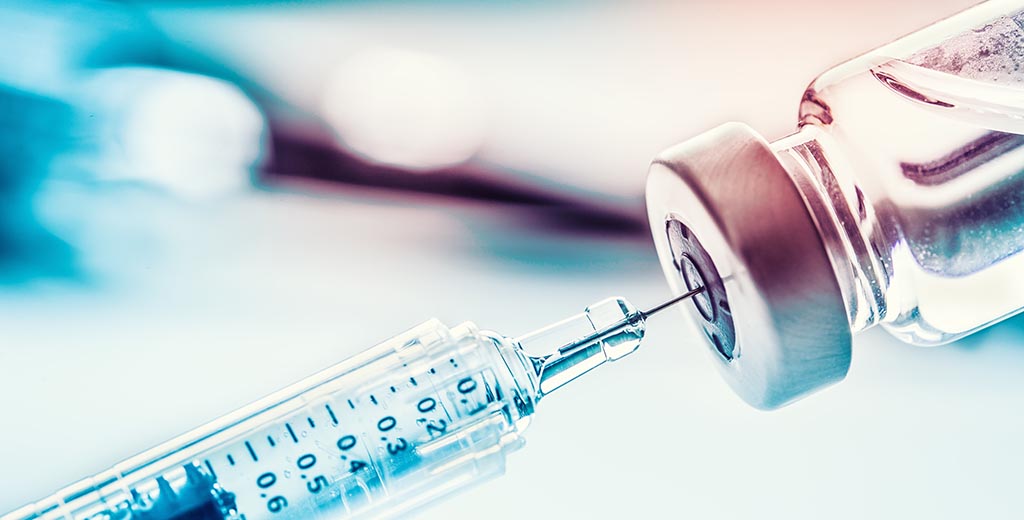An innovative delivery technology vastly improves the viability of tissue regenerating cells, and enhances strength and coordination in animals with spinal-cord injury.
In a study published in Science Advances, Stanford neurosurgical researcher Giles Plant, PhD, and materials engineer Sarah Heilshorn, PhD, and their colleagues report that a customized gel -- developed in Heilshorn's lab as a shock absorber for regenerative cells during and after their perilous journey through the tip of a syringe to the targeted tissue -- kept those cells safe.
As a vehicle for delivering regenerative cells to rats with movement-impairing spinal-cord injuries, this gel overwhelmingly outperformed saline (the current clinical standard). It boosted the numbers of successfully-delivered cells by more than sevenfold compared with saline, as measured two days after the procedure. At four weeks, the gel's advantage over saline was more than tenfold.
Importantly, rats receiving gel-based cell therapy recovered a substantial portion of their lost strength and coordination. Rats getting cells in a saline solution didn't.
Upwards of 350,000 people in the United States live with spinal cord injuries, which can cause various degrees of lifelong paralysis. There's no cure, although physical therapy can sometimes partially restore sensory and motor function.
Nerve cells in the peripheral nervous system can regenerate after being severely injured. Nerves in the central nervous system -- the brain and spinal cord -- can't. No cell-based regenerative therapies have proved successful in reversing spinal-cord damage.
The cells used in the Stanford Medicine study were Schwann cells. Naturally found wrapped around peripheral nerve cells' lengthy projections, Schwann cells speed signal transmission along those tracts -- just as related cells called oligodendrocytes do in the central nervous system. Schwann cells also provide nerve cells that they envelope with nutrients and growth factors.
These properties make Schwann cells excellent candidates for regenerative therapy after spinal-cord injury, Plant told me. But there's a hitch: Only about 5-10% of cells used in regenerative-therapy experiments typically survive the injection. Even fewer remain viable for any significant length of time afterward.
So Plant teamed up with Heilshorn. When cells in saline are injected from a syringe, she explained, they undergo a big jump in pressure and mechanical forces as they move from the syringe's relatively wide body into -- and through -- the needle tip. That tears up their delicate membranes, resulting in a massive reduction in the number of cells arriving intact at the targeted site. Once they do arrive, they encounter a foreign and -- as a result of the injury -- inflammatory environment. They tend to bunch together instead of dispersing throughout the wound site and dispensing nourishing assistance to injured nerve cells.
Heilshorn's solution: Before injecting the regenerative cells, encase them in a hydrogel, a flexible proteinaceous matrix in which a relatively enormous amount of water is fixed in place. (Think of Jell-O.)
Heilshorn's gel liquifies under pressure -- but only where it contacts the inner surface of the syringe's needle tip. The bulk of the cell-cushioning material remains in a gelatinous state and travels relatively effortlessly within its liquified, lubricating outermost layer. On arrival in the tissue, the gel matrix reformulates itself.
Once the cell-containing gel is in place, its porosity permits easy passage of growth factors, signaling molecules and nutrients, so that newly-injected cells aren't starved of these crucial substances.
For this study, Heilshorn customized her gel by doping it with an adhesive molecule similar to one that, in nature, helps anchor Schwann cells to peripheral nerve tissue. The result was that each Schwann cell was suspended in a surrounding cushion of gelatinous material.
In addition to arriving at the injury site in far greater numbers, the Schwann cells delivered via the gel vehicle, rather than via saline, tended to be more adventurous, migrating farther up and down the spinal cord from the injection site than was the case for similar cells delivered in saline.
Spinal-cord-injured rats that got gel-encased instead of saline-bathed Schwann cells had substantially greater forelimb-grip strength and superior ability to traverse a horizontal ladder whose rungs were irregularly spaced.
"In my 20-plus years of doing this, I've never seen results like this before," Plant said, adding that the technology has the potential for broad use in regenerative therapy.
Image by Weyo




